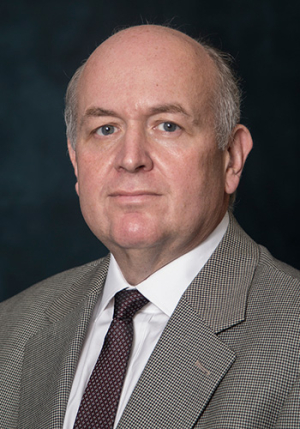Inside the University of Houston Center for Integrated Nanosystems researchers are studying magnetic materials so tiny they require the aid of state-of-the-art microscopes to see.
Though the materials are miniscule—thousands of times smaller than the diameter of a human hair—these researchers work is helping find new ways of doing things. More specifically, they are set to influence everything from the storage capacity of magnetic disk drives to how doctors detect cancer
Using more than $1.2 million in grant funding recently awarded by the National Science Foundation, these center researchers hope to further their efforts by gaining a better understanding of the science behind how magnetic materials behave on the nanoscale in four different projects
“Over the past several years, we have learned how to control materials’ properties at the nanoscale as well as how to utilize their unique properties to enable novel functionalities and capabilities,” said Dmitri Litvinov, director of the center and lead investigator on the NSF grant funding. “These advancements have led to a number of practical discoveries that have allowed us to significantly expand the scope of our funded research within the center. With this most recent funding, we hope to take our work with the center even further and unravel the science behind several methods that stand to not only influence the applications these materials are used in, but expand what is now known about nanomaterials.
Distributed in four separate grants from NSF, the funding will finance each project for three years:
- Work funded by a $364,870 grant, partnering Litvinov, Dieter Weller, a researcher with Seagate Technology, and T. Randall Lee, Cullen Distinguished Professor of Chemistry, sets out to increase storage capacity to advance the current limits of the $200 billion magnetic data storage industry. The trio, Litvinov said, is trying to contribute to the development of a viable route to extend these limits by better understanding the physics and chemistry behind guided self-assembly for bit-patterned media’s makeup. Harnessing this knowledge, Litvinov said, could influence the fabrication of a device far exceeding what’s currently out there.
- In the second grant totaling $279,998, Litvinov is partnering with Weller and Stanko Brankovic, an assistant professor of electrical and computer engineering. Together, they will further explore how the ingredients used to create the magnetic materials that help to store data in magnetic hard disks can be changed at the nanoscale. Using his electrochemical nanofabrication technique, Brankovic hopes to align the materials in a specific atom order to help magnetic bits used in these disks be more stable—a challenge currently hindering growth of the magnetic data storage industry to date. The stronger the magnetism of a material, he said, the more useful it is since this stronger magnetism allows the material to store data more easily.
- Together, with co-investigators Richard Willson, professor of chemical and biomolecular engineering, and Chung-Che “Jeff” Chang, associate member of the Methodist Hospital Research Institute, Litvinov will build a highly sensitive nanomagnetic biosensor array system using the third $299,966 grant.
“The goal is actually to understand the limitations of molecular biosensing technology,” Willson said. “We need to understand how small a particle you can detect and how precisely you can control molecule detection.” This knowledge, he said, could help create a sensor capable of detecting the biomarkers for diseases using much smaller body fluid or tissue biopsy samples than is possible to date. - With the last $269,842 NSF grant, Litvinov and Karen Martirosyan, research assistant professor of chemical and biomolecular engineering, are attempting to expand the applications of a process called combustion synthesis for magnetic nanoparticles. Using the funding, the researchers are taking carbon particles, which generate heat in an oxygen environment, and combining them with simple oxides in precision-engineered patterned precursor media and nanostructured arrays to grow the magnetic particles used in medical imaging, biosensors and data storage applications.
“The research will help unlock the potential of a transformative materials synthesis method that can be applied both to discover materials with otherwise unachievable properties as well as improve the manufacturing capabilities of applications that use these magnetic particles by what we hope will be our ability to better control their growth during the combustion synthesis process,” said Martirosyan.
